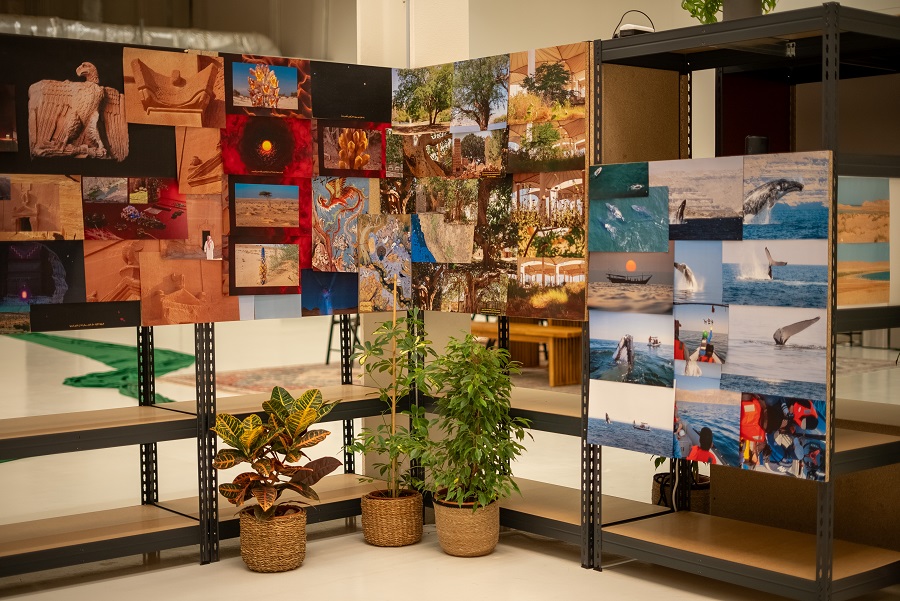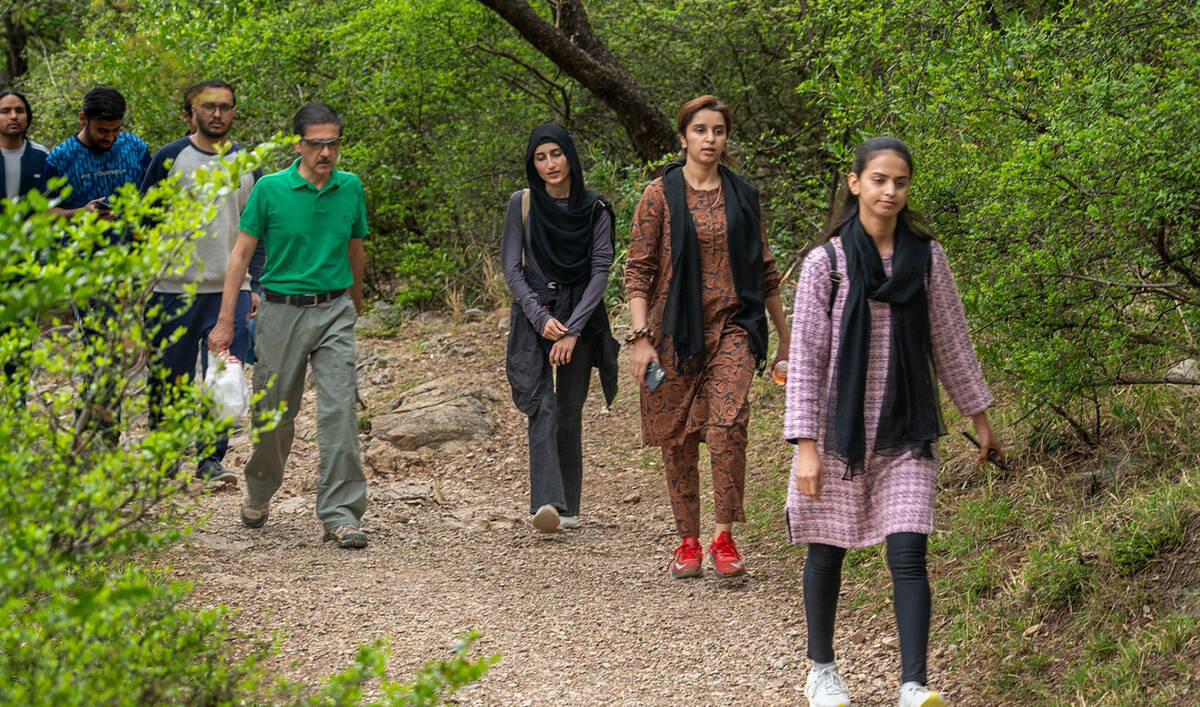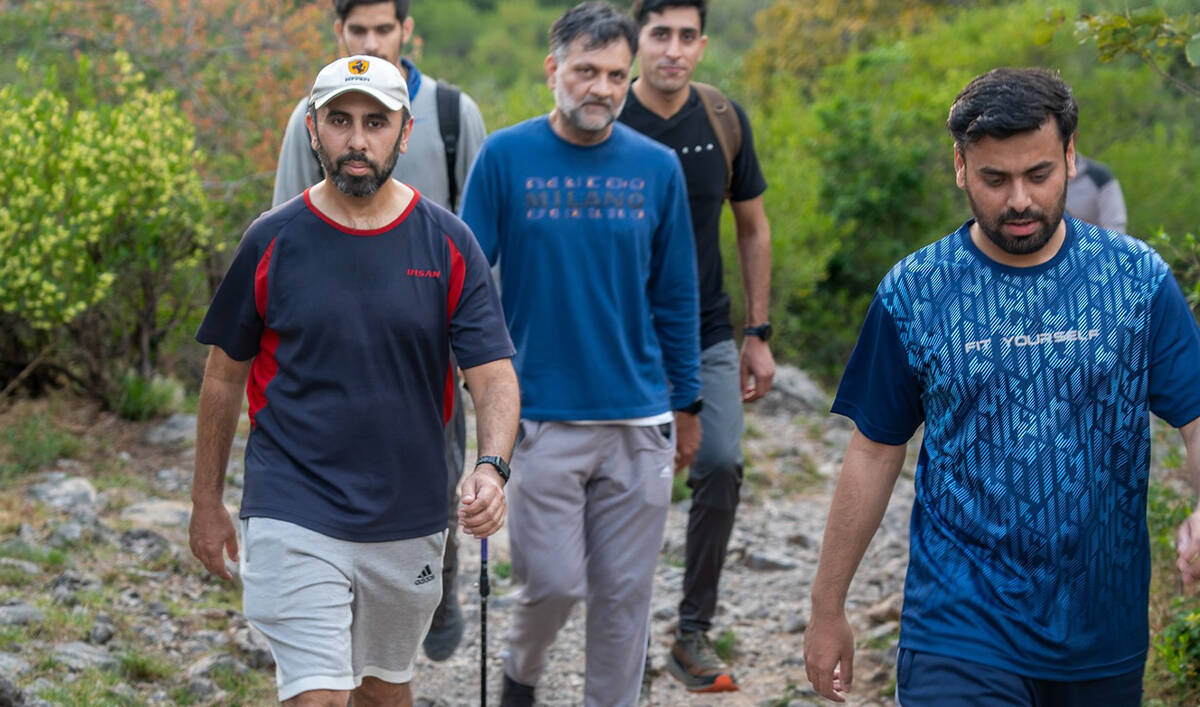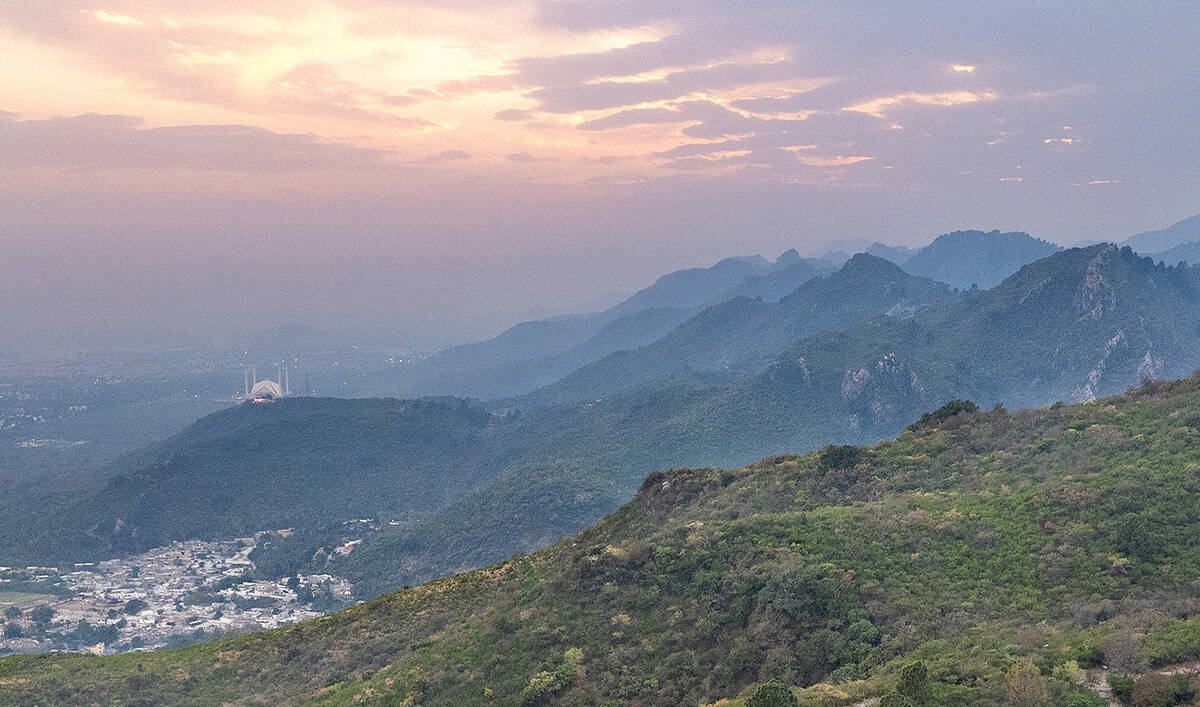DUBAI: What does art have to do with the creation of a futuristic city in the middle of the desert? According to Michael Lynch, the head of the entertainment and culture sector at NEOM — Saudi Arabia’s $500 billion megaproject — it has a vital role to play.
“Building a region also requires artists to be working with us,” Lynch told Arab News. “We're talking about a future region within a forward-looking country. To make a community work, artists are an integral part of it, and to make a region work, artists in their various forms and with the various things that they want to work on are incredibly important to building the quality of life and the quality of experience for people.”

A detail from Abdulmohsen Albinali's 'Landscaping the Desert,' produced during his NEOM residency. (Supplied)
As proof of NEOM’s focus on art and culture, it kicked off its inaugural three-month long Artist-in-Residence program in September. Four Saudi artists — Bilal Allaf, Ahaad Alamoudi, Abdulmohsen Albinali and Ayman Zedani — took part and were joined by four international artists: Eduardo Cassina from Spain, Tamara Kalo from Lebanon, Giulia Bruno from Italy and Liva Dudareva from Latvia.
“For the residency, we paired each artist with a peer from eight different sectors across NEOM,” Lynch explained. “We had biotech, robots and design so that each artist had someone largely from the sector of engineering or completely different backgrounds. None of them were artists, but they were all young and interested in the idea of how the artists would work within the context of NEOM.”
The NEOM “peers” acted as guides to assist the artists in better understanding the region.

A detail from Eduardo Cassina's 'A Blanket for Dreaming.' (Supplied)
“I think the artworks created at the end of this period were quite different pieces of work but offered really incredible ways to understand the role of the artist within a community, within a future region, within NEOM itself as a starting point,” said Lynch
NEOM’s culture section collaborated with Dubai-based Alserkal Advisory to develop the residency. Its first phase saw the artists travel to NEOM to learn about the region, its landscape and the upcoming futuristic city. For the second phase, the artists traveled to Thyssen-Bornemisza Art Contemporary, an art and advocacy foundation in Madrid, to work on the ideas inspired by their time in NEOM. The works were then exhibited in NEOM in late November for a short time, accompanied by lectures from the artists for NEOM staff.
“We saw the residency as a first step for us, and hopefully what we will then be able to do is repeat it over a period of time in venues across the region and ultimately some of the bigger venues that are due to happen with The Line,” added Lynch, referring to the linear smart city due to be constructed in NEOM.

Ahaad Alaamoudi's 'Work in Progress' on display at NEOM Museum. (Supplied)
Among the works, standout pieces included Cassina’s creation, which mixes the worlds of architecture and sociology. With “A Blanket for Dreaming,” the artist presents the history of the site of NEOM, which spans thousands of years, on a tapestry map, roughly 8.4 meters long and 2.1 meters tall. It tells the story of the area from the Nabataean period to the contemporary era and was created on a “hacked” Japanese automated knitting machine built in the 1990s, which Cassina found in Madrid.
“We had some people visiting NEOM around the time it was exhibited and they immediately wanted to purchase it,” said Lynch.
Performance artist Allaf, meanwhile, presented work featuring a dancing robot programmed by one of Neom’s engineers, demonstrating how the worlds of dance, art and robotics could intersect.

Ayman Zedani's 'To The Eagles, Chapter 2.' (Supplied)
“The engineer is now also interested in how art can (be mixed with) engineering to make major public artworks for Neom in the future,” said Lynch, emphasizing that he hopes that in the same way as Neom has been able to showcase its architectural plans in exhibitions around the world, Neom’s culture sector hopes to be able to “replicate the artist in residence scheme in the next couple of years and have some of the work become part of a potential collection for buildings.”
Lynch said the residency had exceeded expectations for everyone involved.
“It was really important, I think, for the artists to understand the complexities of the 26,500 square kilometers of NEOM, and that it isn’t just about The Line as the dominant public manifestation of what has been going on,” said Lynch. “It was about their ability to travel around, look at the site, see what was happening, and to be able to respond to that. And hopefully we will hold onto those connections as we step forward.”
























